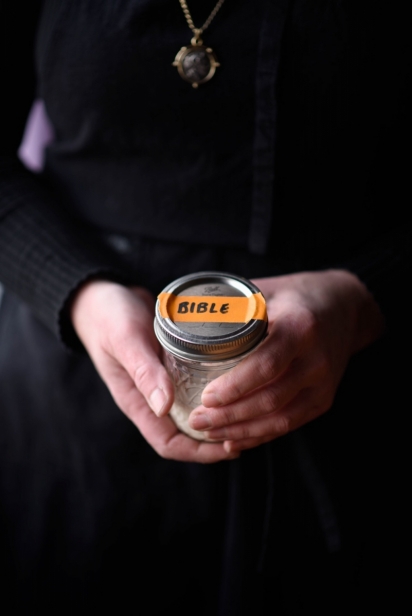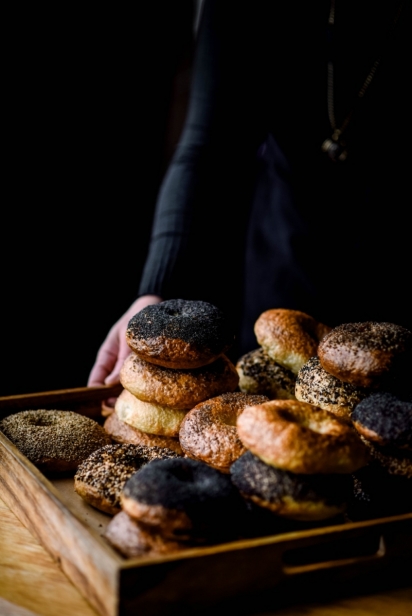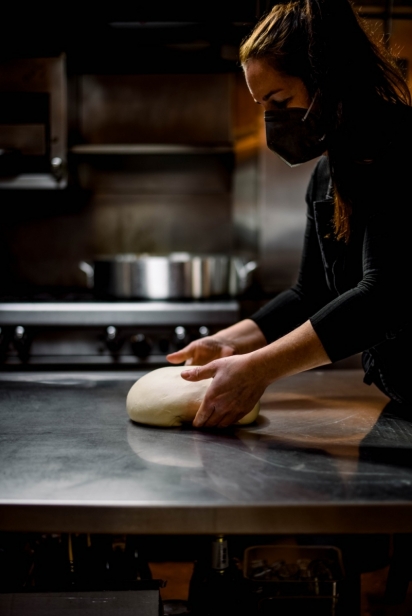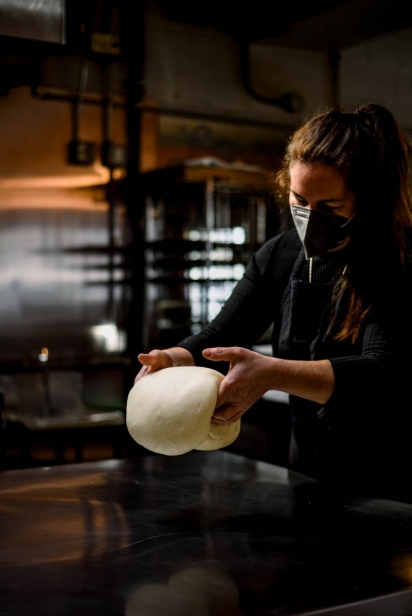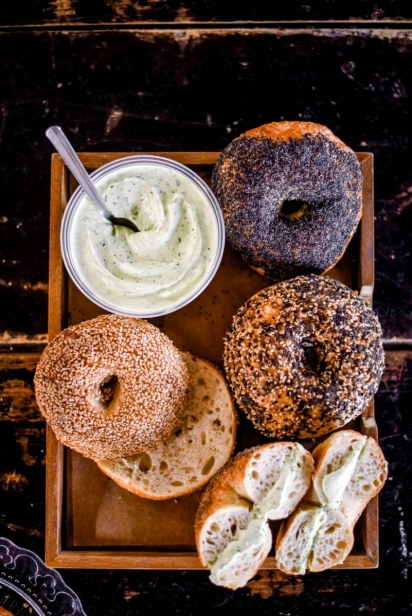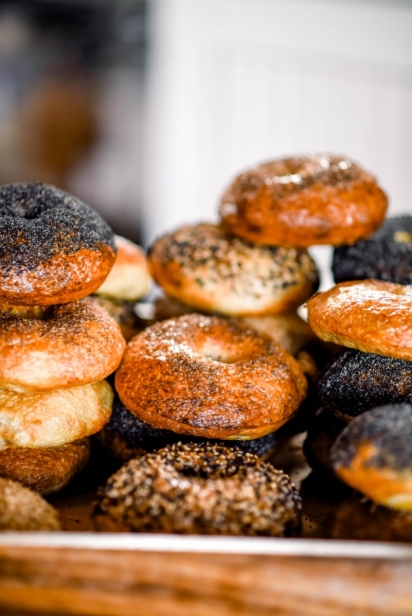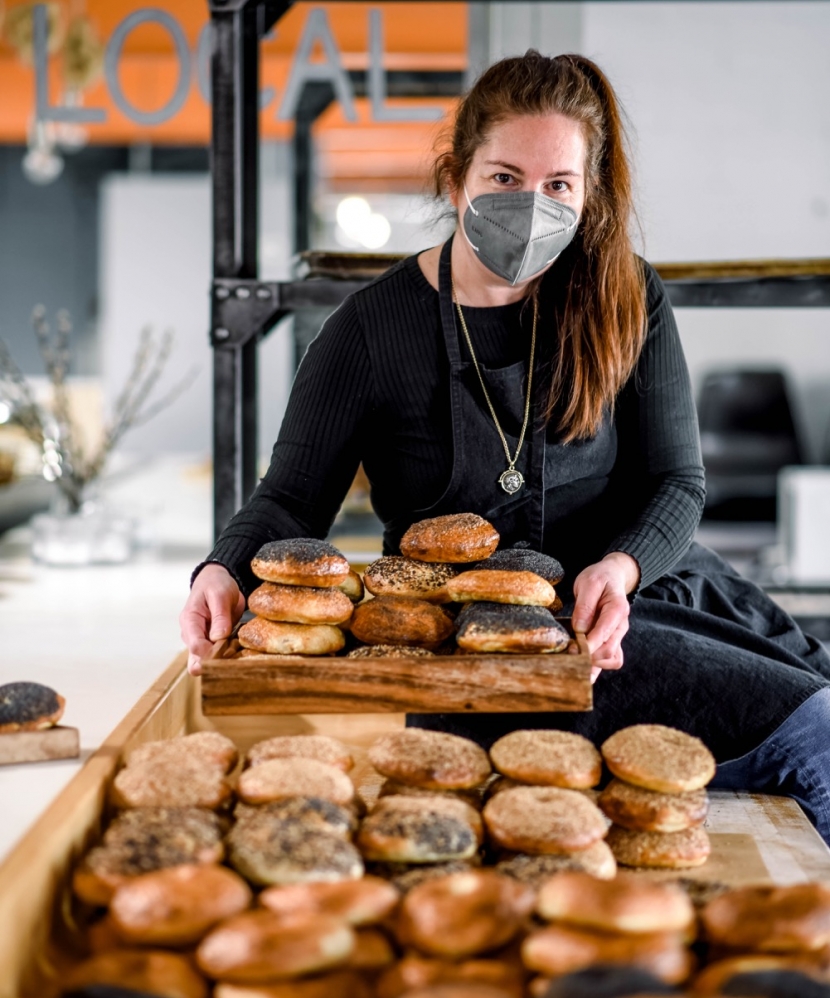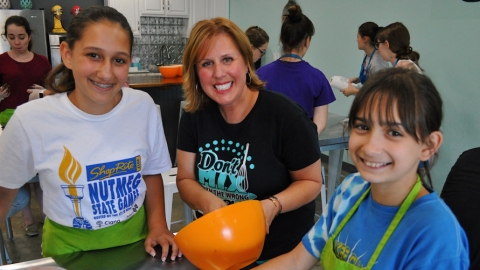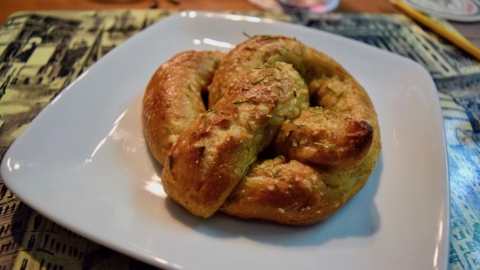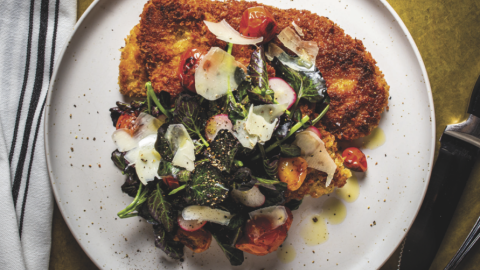MOOD:BAGELS
I'd have to define my current relationship status as, “it’s complicated.” More accurately, I’m (very) involved in a (sometimes) one-sided and (mostly) demanding partnership with my wild yeast sourdough starter. I call him Bible. Quite frankly, he is a superhero. He is full of energy, wildly exciting, and ultimately fascinating. He’s responsible for the oven spring, the light and airy texture of the crumb, and the crisp chewy crust of the sourdough bagels. We call them Badass.
I spend most of my time (and a good chunk of money) feeding and maintaining Bible, being his daily caregiver, and staying on duty with no vacation, snow days, or time off. I worry about him pretty regularly, frequently moving him to a better spot for some serious rest and reflection. I make sure that, every night, he is snug as a bug in a rug, super toasty, and all tucked in. It’s a real modern-day marriage!
Bible is appropriately named, since this kind of leavening has been around for over 5000 years. The truth is that wild yeast starter, or sourdough, was the only way to leaven bread before the invention of commercial yeast, so it had to be nurtured and looked after. It was considered quite the asset. Some believe that ancient Egyptians used to wear the starter in a capsule-like necklace to guard it and keep it safe. Alaskans are said to cuddle with their sourdough cultures in bed to maintain a warm environment. My modern-day methods don't seem so crazy in comparison.
Bible was born during the early, dark days of 2020, at the very beginning of the pandemic. It all began when the world stopped moving. There was time, all of a sudden, lots of time. No more appointments, reservations, parties, or plans. Nothing. We were all waiting, watching, and wondering what was going to happen next. I was a wreck.
I quickly learned to embrace the gift of time at home with my family. I immersed myself in cooking and baking even more than when I was working full-time at my restaurant. I decided to see if I could create a sourdough starter. I read up on harvesting wild yeast from the environment and how simple it was to create a basic starter. I researched flour, milling processes, and the origin of certain grains.
I followed the suggested steps: measuring the flour and water, mixing it together, and waiting for the magic to happen. Over the next few days, I repeat, repeat, and repeat again. I nurtured what looked like a mixture of flour and water for an extra-long incubation period before I took some of the starter mixture, named it, and made the first bread. This large round loaf, a miche, was a good starting place. I used a basic recipe with a mix of flours and some straight active starter, later learning that making a levain is a stronger and more consistent way to leaven a dough.
Like many during this pandemic, I had some anxiety. What was going to happen tomorrow? When could I see my family and friends again? I needed something else to think about. I became bread obsessed. All I did was bake. There was an abundance of trial and error, but mostly error. The early loaves were dense and heavy. The audience was critical. It was somehow calming and became more and more predictable as time went by. It was that routine that gave me comfort. That’s the thing about a wild yeast starter; it likes a regular schedule and thrives in that environment. I began to bake loaf after loaf of the same bread, consistently light, with an open crumb, a golden crust, and a mild tang. The next challenge was, could I make a sourdough bagel?
While champion sourdough bakers measure and compare their recipes in hydration levels, proofing temperatures, and techniques, sourdough bagel bakers don’t have much to compare. The hydration is consistent and much lower – around 50-60%. So why even think about their hydration...I mean, they’re just bagels, right?
While the ingredients are simple, sourdough bagels are incredibly labor intensive and need some serious structure in their dough development. Every step needs to be noted and timed. The dough itself is heavy, dense, and elastic due to the high protein content in the flours. The whole process takes several days from start to finish. In addition, the starter must be wildly active; after all, this is what the levain is made from. The levain, which is a powerful starter made specifically for a recipe, must rest for almost a day. Then the dough is mixed, timed, weighed, rolled, and shaped, which takes a lot of swift hands, especially when you’re making hundreds of bagels. Then there’s another long, cool rest in the fridge before the bagels are boiled, topped, and baked. Whew!
Everyone has an opinion on bagels. Ask anyone about their favorite bagel and they’ll have an answer or a story, likely from their childhood. But ask most people if they’ve ever had a sourdough bagel, and the answer is no. But they want one once you mention it, pretty much immediately. A bagel – as I’ve learned – can provide immeasurable joy in an otherwise dark time. It sounds crazy, but bagels make people happy, and sourdough bagels make people even happier.
Bible consistently delivers, as we religiously roll, day after day, poppy after sesame after smoked sea salt after blond pumpernickel, and customer after customer.
Jennifer Balin is chef and owner of Sugar & Olives in Norwalk, as well as its most recent extension, Badass Bagels.
> Sugar & Olives: 21 Lois St., Norwalk; 203-454-3663



